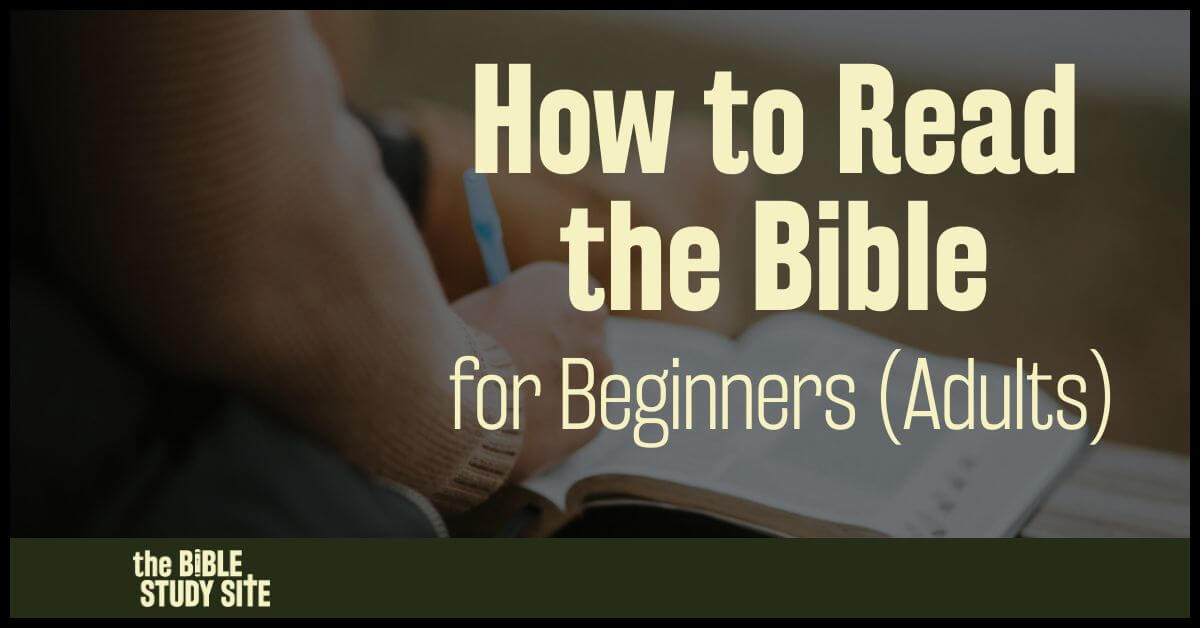If you’ve never read the Bible before, it can be pretty overwhelming. It’s long, it’s unfamiliar, and you didn’t have a high school or college course called How to Read the Bible 101. So for those of you who are completely new to it, here’s what you need to know about how to read the Bible — for beginners.
The Bible is Not Just One Book
The Bible is a single book — but it’s also not. It’s kind of like an anthology, or like a series all bound together.
The Bible consists of 66 smaller books, grouped into 2 major sections, the Old Testament and the New Testament. They can be further subdivided into smaller categories, like law, history, poetry, epistles (letters), etc. All 66 books are inspired by God (2 Timothy 3:16-17), so they all inter-relate. Many have shared “characters,” similar to what you might see with a group of fiction series from a single author who set them in the same town. But they also each can stand alone.
You Don’t Have to Read in Order
Because each book-within-the-book is self-contained and can stand alone, you don’t necessarily have to just start at page one and read straight through from start to finish. You can, but around Leviticus and Numbers (the third and fourth books) it can get pretty dry and repetitive, and a lot of people burn out, so that might not be the best approach for a total newbie to the Bible.
Where to Start
So where should you start? There isn’t really a right or wrong here. Any place you want to start (and will actually stick with it) is fine; a lot of it is a matter of personal preference. But some books are easier than others, which makes them generally more beginner-friendly.
I think Genesis is an excellent place to start. It’s the beginning for a reason, and it portrays a lot of beginnings: the beginning of the world, the beginning of marriage, the beginning of sin, etc. And most of it is narrative (story), so it’s not too confusing.
Most people suggest starting with the New Testament — either one of the four Gospels (most people recommend John) or one of the epistles (Ephesians and Colossians are both pretty accessible options — also fairly short). I think these are excellent early options, as well, although I still like the idea of starting with Genesis.
So I might recommend reading Genesis, then John, then Ephesians (possibly rolling right into Philippians and Colossians, which follow Ephesians). (Don’t get confused when it comes to John. There’s a Gospel called John, which is what we’re talking about here. John also wrote three epistles, which are called 1 John, 2 John, and 3 John. Right now you want the one that’s just called “John.”) By then you should be getting more comfortable, and can branch out to other books.
I like to use a chart that lists all the chapters of all the books of the Bible, and check them off as I read them. That way I can “jump around” from book to book and still keep track of what I have and haven’t read.
Finding Things in the Bible
If you’ve been around people who grew up in the church, you might feel like they just know where everything is when they go to look it up! This might be truer than you realize; many Christian kids memorize the names of the books of the Bible in order, the same way kids might memorize the Presidents or state capitals in school. But mostly, this is just a matter of familiarity learned over time. You’ll get there, too!
In the meantime, your Bible should have a table of contents near the front — probably right behind the copyright page. This can help you find a particular book without flipping pages indefinitely.
Within a book, the content is divided first into chapters and then further into verses. When you see a written reference, it will consist of the book name (or abbreviation) and then the number of the chapter and verse separated by a colon (like the hour and minute when you’re writing out a time). So when you see:
Eph. 2:10
That means (the book) Ephesians, chapter 2, verse 10.
If you want more in-depth information about how the Bible is organized, how it was compiled, etc., you might like A Visual Theology Guide to the Bible.



